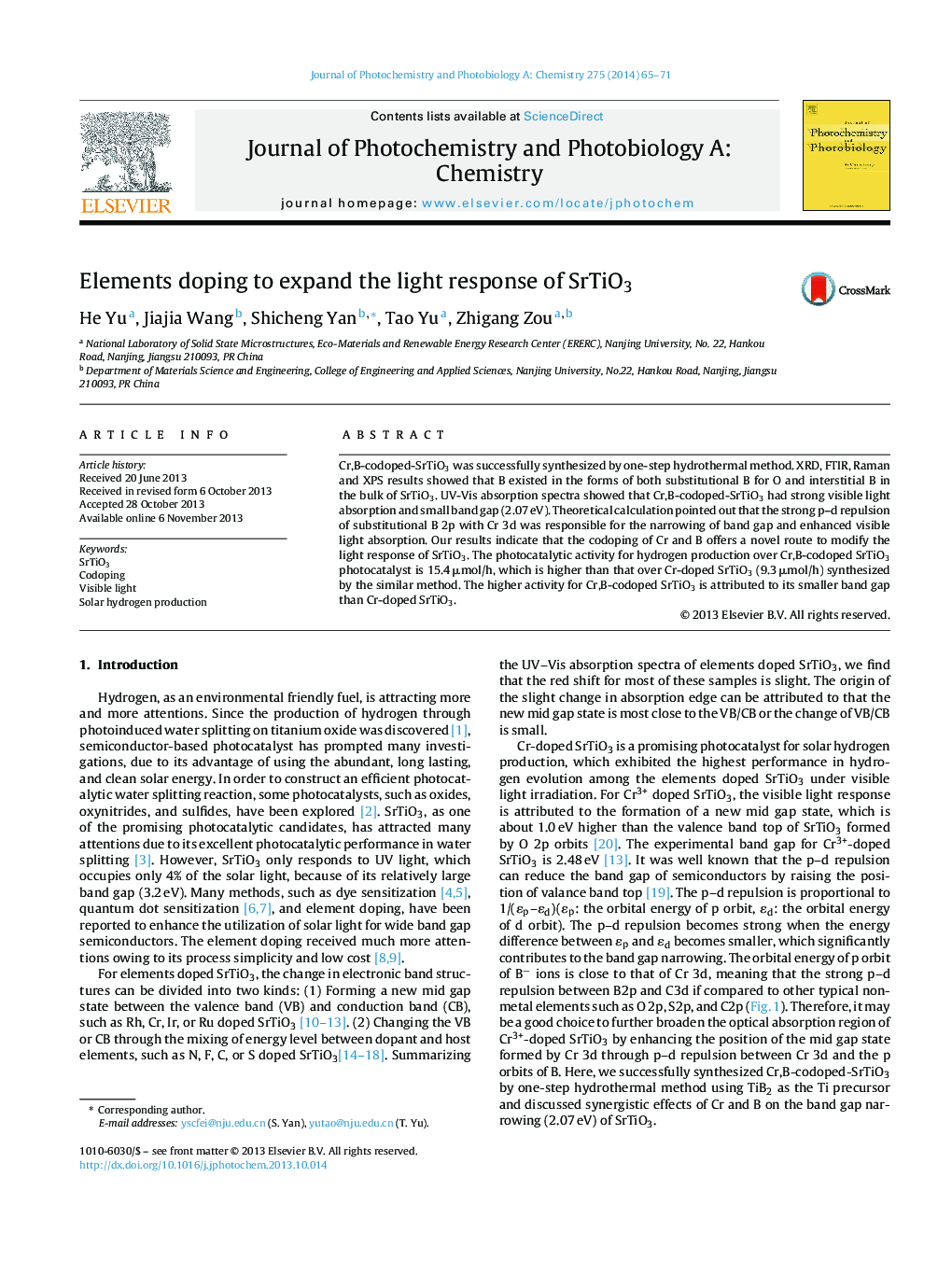| Article ID | Journal | Published Year | Pages | File Type |
|---|---|---|---|---|
| 26313 | Journal of Photochemistry and Photobiology A: Chemistry | 2014 | 7 Pages |
•Cr,B-codoped-SrTiO3 was successfully synthesized by one-step hydrothermal method.•Cr,B-codoped-SrTiO3 had stronger visible light absorption and smaller band gap (2.07 eV) than Cr-doped-SrTiO3.•The strong interaction of Cr 3d with substitutional B 2p levels lead to the stronger visible light absorption and smaller band gap.•Cr,B-codoped SrTiO3 photocatalyst showed higher photocatalytic activity for hydrogen evolution (15.4 μmol/h) than that over Cr-doped SrTiO3 (9.3 μmol/h).
Cr,B-codoped-SrTiO3 was successfully synthesized by one-step hydrothermal method. XRD, FTIR, Raman and XPS results showed that B existed in the forms of both substitutional B for O and interstitial B in the bulk of SrTiO3. UV-Vis absorption spectra showed that Cr,B-codoped-SrTiO3 had strong visible light absorption and small band gap (2.07 eV). Theoretical calculation pointed out that the strong p–d repulsion of substitutional B 2p with Cr 3d was responsible for the narrowing of band gap and enhanced visible light absorption. Our results indicate that the codoping of Cr and B offers a novel route to modify the light response of SrTiO3. The photocatalytic activity for hydrogen production over Cr,B-codoped SrTiO3 photocatalyst is 15.4 μmol/h, which is higher than that over Cr-doped SrTiO3 (9.3 μmol/h) synthesized by the similar method. The higher activity for Cr,B-codoped SrTiO3 is attributed to its smaller band gap than Cr-doped SrTiO3.
Graphical abstractFigure optionsDownload full-size imageDownload as PowerPoint slide
